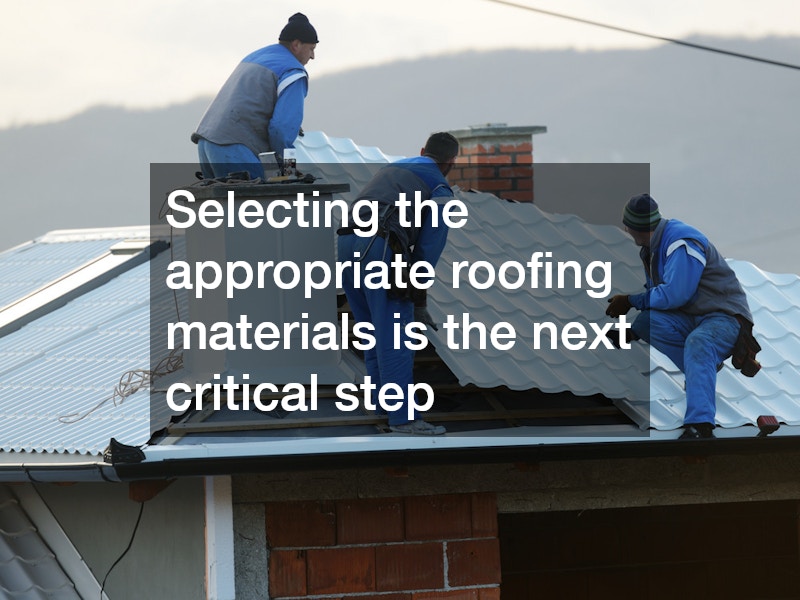Understanding the fundamentals of professional roof installation is crucial for ensuring your home’s safety and integrity. It is imperative to understand the essential steps and considerations involved in the roof installation process. A well-installed roof not only protects against weather elements but also enhances the curb appeal and value of your home.
By learning these basics, homeowners can better communicate with roofing professionals and ensure that their investment lasts for decades.
The Initial Steps
The first step in any professional roof installation is a thorough assessment of the existing roof structure. Experts conduct a detailed inspection to determine any underlying issues such as leaks, structural damage, or inadequate ventilation that could compromise the new installation. This stage may involve the removal of certain sections of the roof to get a closer look at the condition of the roof deck and ensure it is capable of supporting the new roofing materials chosen.
Selecting the appropriate roofing materials is the next critical step. This decision is influenced by factors such as the local climate, the architectural style of the home, and budgetary constraints. Roofing materials range from traditional asphalt shingles to metal panels and tile, each offering unique benefits. For instance, metal roofs are revered for their durability and energy efficiency, which can significantly reduce heating and cooling costs over time. Conversely, asphalt shingles are popular for their cost-effectiveness and versatility.
Planning the project timeline is equally important to ensure a smooth roof installation process. The timeline is often influenced by the complexity of the project, the size of the roof, and unpredictabilities such as weather conditions. Effective planning accounts for potential delays and allows for a phased approach that ensures quality workmanship without compromising speed. Homeowners should also coordinate with contractors to minimize disruptions to daily life during the installation.
Choosing the Right Materials
When choosing the right roofing materials, it is essential to understand the primary climatic challenges your roof will face. For instance, homes in regions with heavy snowfall benefit from steeply pitched roofs with materials like metal or slate, known for their ability to shed snow quickly. Alternatively, in areas prone to high winds or hurricanes, opting for materials with higher wind resistance ratings, such as architectural shingles or standing seam metal roofs, can provide added security.
The aesthetic appearance of roofing materials is also a significant consideration. A roof represents a sizable portion of a home’s facade and contributes to its overall visual appeal. Homeowners can select from a range of colors, textures, and styles to complement their home’s exterior design. For example, wood shakes might suit rustic-style homes while slate can accentuate classical architectural forms. Online simulators offered by roofing manufacturers can help visualize how different materials will look on your home.
Budget plays a crucial role in material selection. It’s important to balance upfront costs with long-term benefits and maintenance requirements. While it might be tempting to opt for cheaper materials, considering the installation’s long-term impacts often justifies the initial expense of premium materials. For instance, investing in a higher-quality material with a longer lifespan can reduce overall costs by minimizing maintenance needs and extending the period before replacement is required.
The Installation Process
The roof installation process typically begins with the painstaking task of removing the old roofing materials. This step is essential to expose the roof deck and identify any areas requiring repair before new materials can be laid. This phase can be labor-intensive, involving debris removal and ensuring that no damage is done to the underlying structure in the process. Proper disposal of old materials is also an environmental consideration, often requiring coordination with waste management services.
Once the old roof is stripped, a detailed inspection of the roof deck follows. Experts look for signs of rot, mold, or structural abnormalities that could hinder the performance of the new roof. Repairs or reinforcements are made at this stage, sometimes including the laying of a new sheathing if necessary. This ensures that the roof has a solid foundation, free of defects that could prematurely compromise the integrity or appearance of the new roof.
The next step involves installing the underlayment, a crucial barrier protecting the roof deck from moisture. Underlayments can be synthetic or felt, chosen based on their ability to repel water. This step is followed by installing metal drip edges that prevent water infiltration at the roof’s edges. Finally, the primary roofing material, be it shingles, tiles, or metal panels, is installed, starting from the bottom edge and moving upwards to ensure watertight coverage.
Professional roof installation is a complex process that requires careful planning, skilled execution, and ongoing maintenance. By understanding these fundamentals, you can make informed decisions and ensure the longevity and effectiveness of your roof. A well-executed roof installation not only provides security against external elements but also enhances the architectural beauty and value of your home. Staying informed about the various aspects of roofing installation allows homeowners to actively participate in creating a durable and aesthetically pleasing roofing system that stands the test of time.






